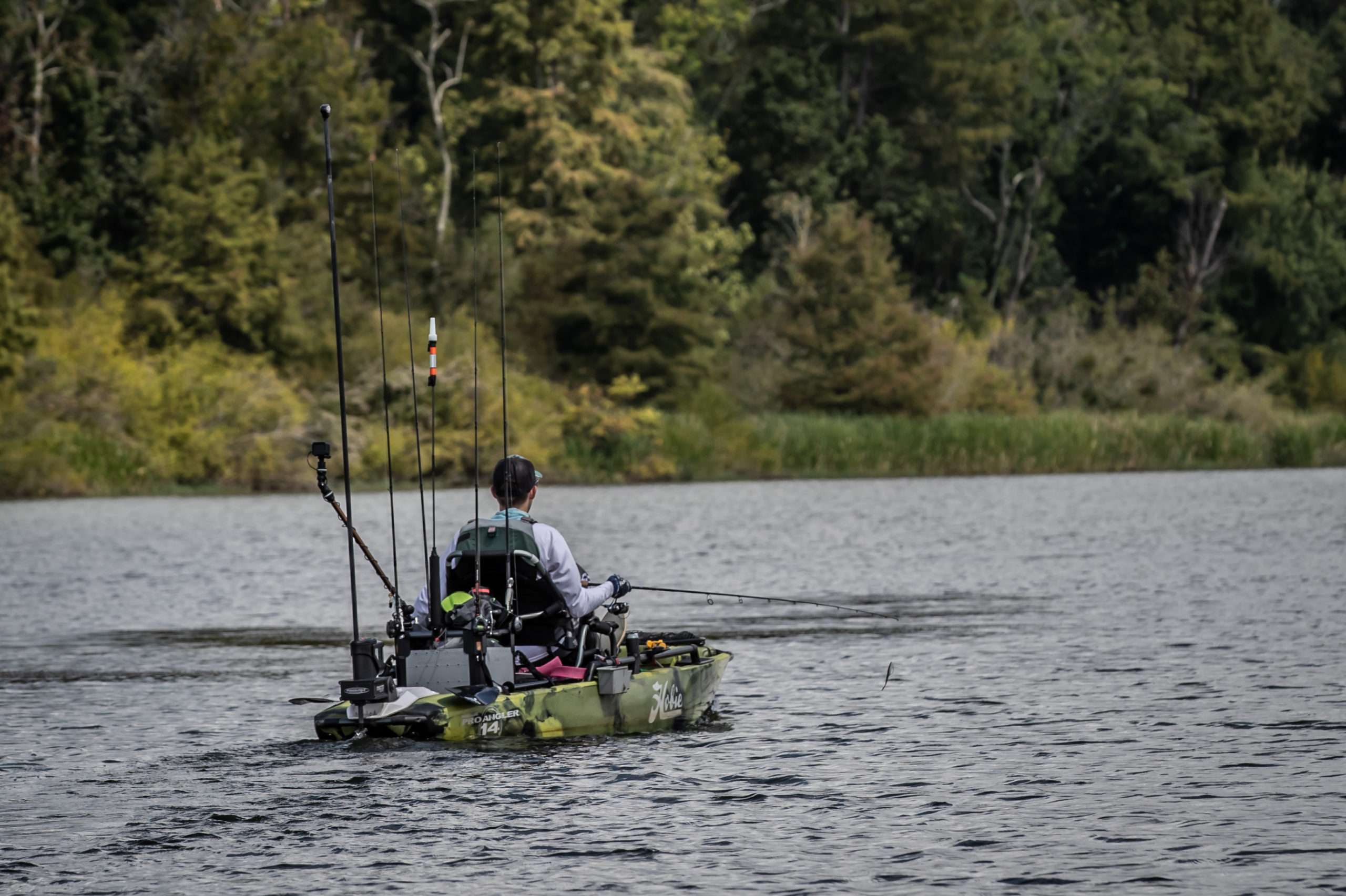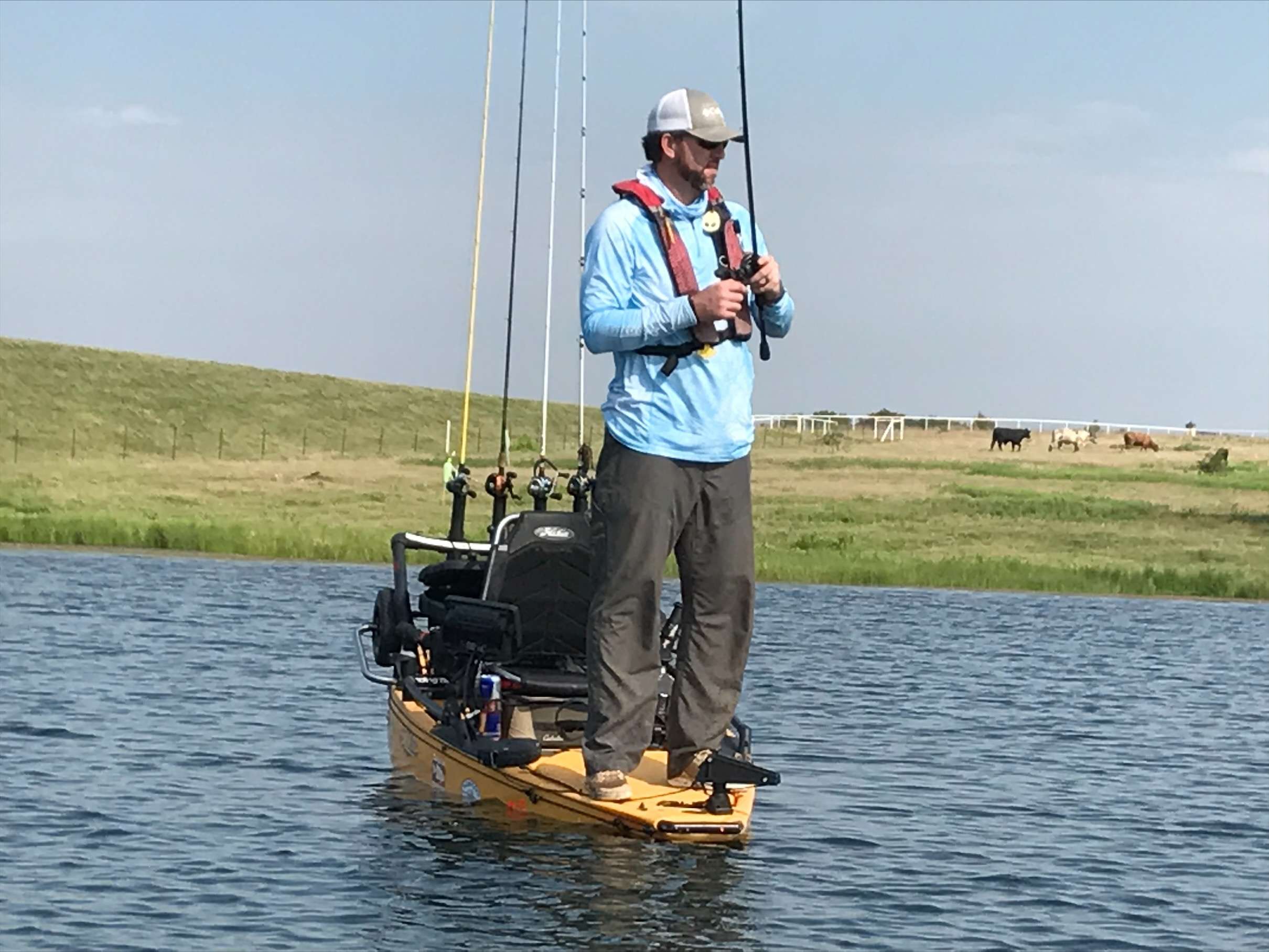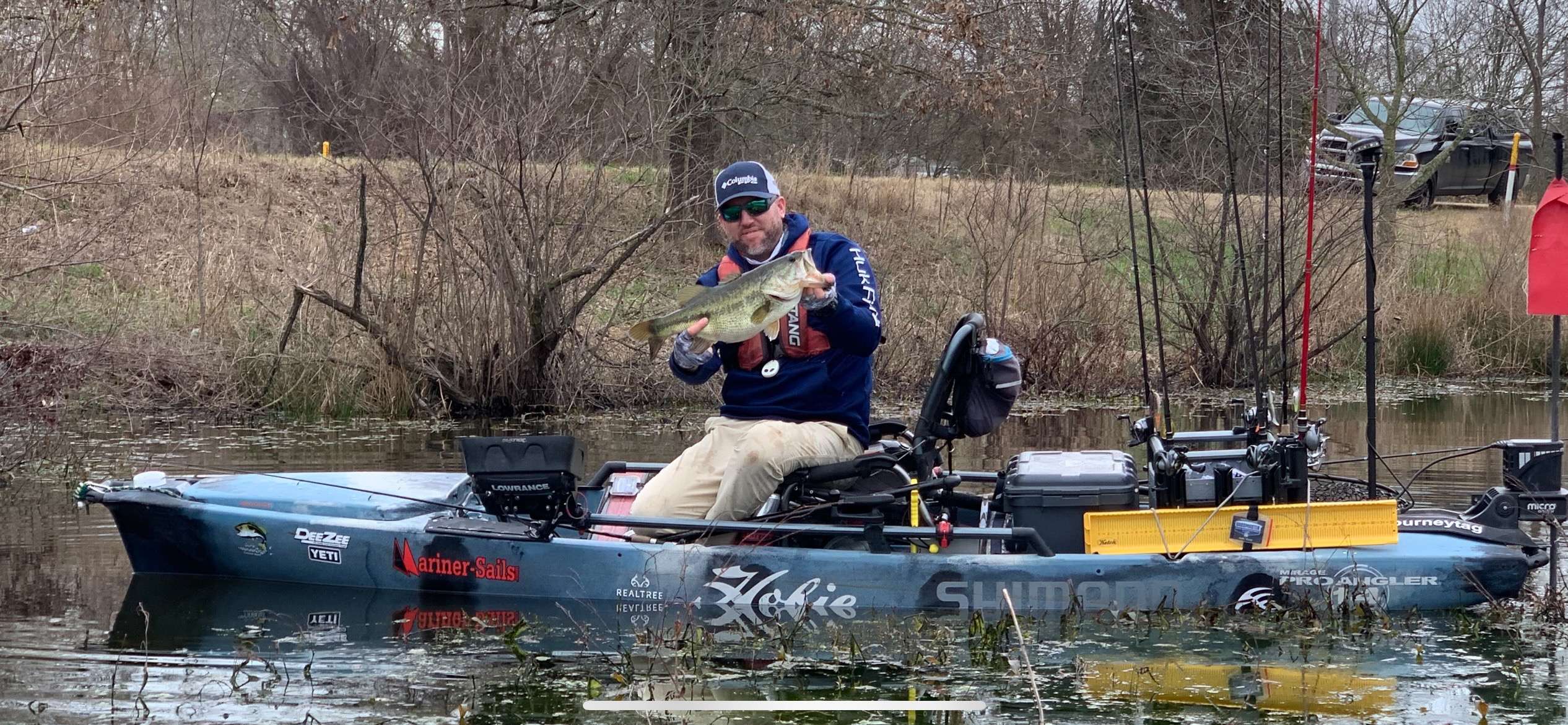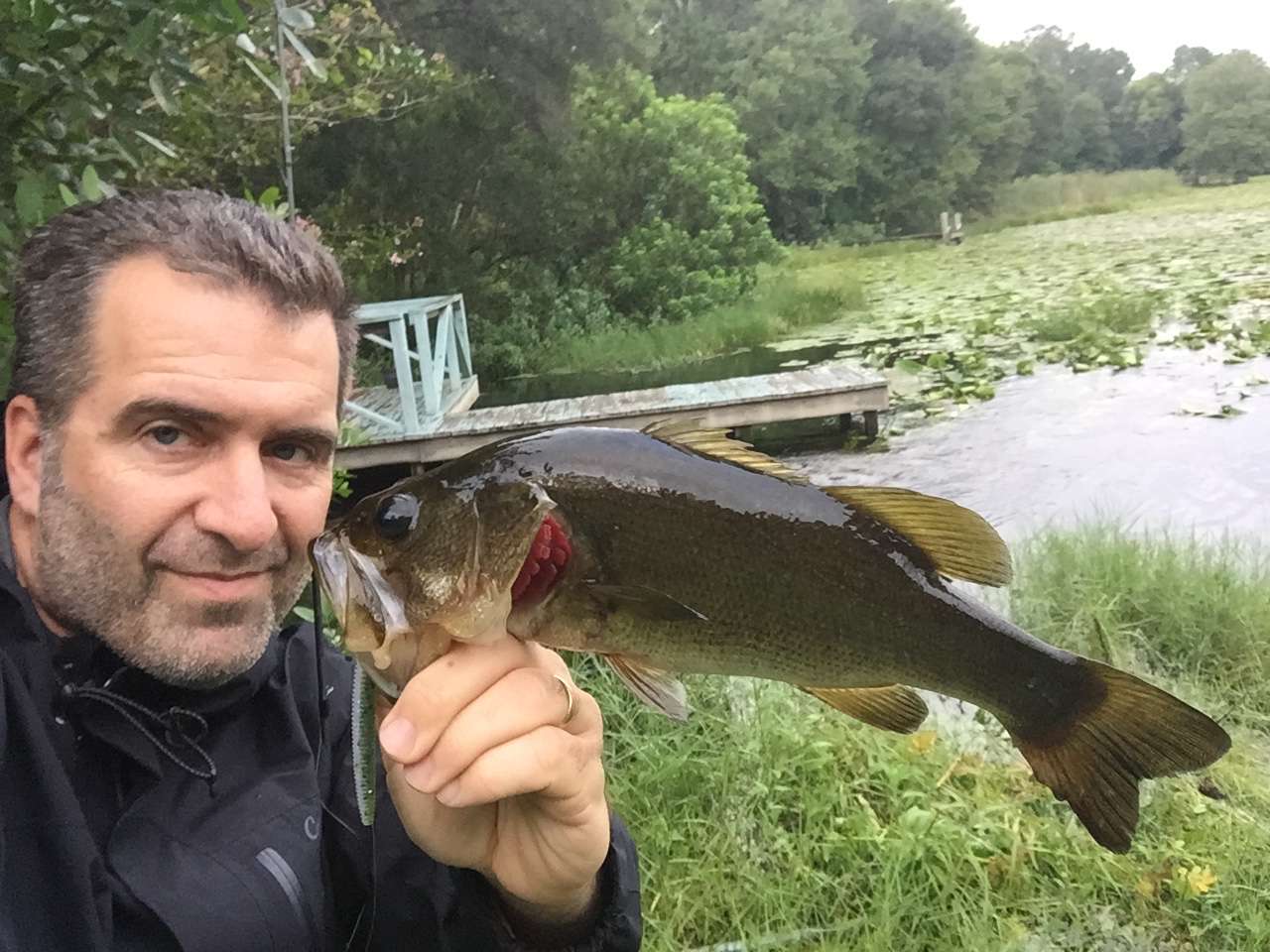
It’s not that kayak bass anglers do things dramatically different from their bass boat counterparts; they just do it with fewer rods. Space is the obvious consideration, and when it comes to whittling down a selection to the necessary few, decisions follow these logical points.
For starters, Clint Dunbar of Prosper, Texas, believes less is more. Fishing from a 14-foot Hobie Pro Angler 360, Dunbar wants to hit the water ready for whatever he may encounter, but a lot of that comes down to fishing intentionally.
“It’s my opinion, if you’re carrying 10 to 12 rods on tournament day, chances are that person doesn’t have them figured out,” he said. “If you only have three to four rods, you’re a little more intimidating. The guy that only goes out with one rod — I’m in awe of that guy.”
That being said, necessity steers reality, and a diverse rod selection may benefit practice days, or a less defined tournament plan. Such cases require situational discernment.
Rod selection logic
Habitat is the first consideration, as this tells Dunbar whether he’ll be fishing open water techniques or sending something into cover. Then there’s fish size. 2- to 3-pounders play a very different game than something over 5 and on big-fish factories such as Lake Fork (where he will compete Feb. 4-5), you have to be able to handle a double-digit beast.
“If you get into a big fish, you need backbone, so it’s a heavy or extra-heavy rod with a fast or extra-fast action,” Dunbar said. “On Fork, I’ll carry a couple of flipping rods, a medium-heavy, moderate-action glass rod for squarebills, ChatterBaits and spinnerbaits and a medium, moderate-tip rod for deep crankbaits.”
Regardless of a what a given lake offers, kayakers simply cannot carry a technique-specific rod for every reasonable option. This is where strategic application of multi-use rods effectively blends preparation and space management.
“I can’t carry 20 to 30 rods like a bass boat; I can roll with 10 to 11 rods and be organized, but I can still do many different techniques — you have to use some utility players,” Dunbar said. “In some lakes, the slightest change in color makes a big difference, so if (a bass boat angler) doesn’t want to retie, they can just rig up two crankbait rods or two ChatterBait rods. Kayakers can’t necessarily do that.”
Dunbar said he minds his planned bait rotation when rigging his rods. Specifically, he doesn’t use topwater plugs all day, so at some point, he’ll re-rig the rod with his surface bait for another duty.
“Whatever I’m going to use those rods for later in the day, I’ll make sure I don’t want to use it immediately,” Dunbar said. “For example, I may use a secondary flipping rod as a frog rod. I’ll do it as wisely as possible and be as efficient as I can with what I have on the boat.”
Bryan Howell of Rowlett, Texas, typically anchors his rod selection with two of a bait he knows he’ll throw all day. For example, if he’s on a ChatterBait bite, he’ll rig a 3/8-ounce green pumpkin bait and a 1/2-ounce model in white.
“After that, I like to have a lot of general-purpose rods (7- to 7-3 medium-heavy or heavy, fast action) like a Dobyns 733C or 734C,” he said. “You can do pretty much anything on those rods. They may not be the best rod for every job, but 95% of the time, they’ll get the job done.”

Where to keep ’em
Fishing kayaks are made with molded rod holders, but tournament anglers typically add outward facing holders to the track system and vertical holders affixed to behind-the-seat storage containers — basic “milk crate” style, or branded options like Hobie’s H-Crate or YakGear’s Angler Crate.
Dunbar regularly works with 12 rod holders — two on his H-Rails, four built-in H-Crate spots, plus two additional three-rod banks on the back and left side of his crate. He also points to Mariner Sails’ horizontal rod rack as a convenient option for expanding rod count without increasing upright clutter.
Howell’s typical setup puts four rods in his H-Crate holders, six in his Hobie Pro Angler’s horizontal rod tubes and, occasionally, two in the kayak’s gunwale rod holders. If he needs more, he can double up the rod tubes.
“Those tubes keep them down there out of the way,” Howell said. “Say you’re on a lake with cypress trees everywhere; you might be going underneath branches with Spanish moss hanging down. You don’t want your rods catching on the trees, getting broken or falling out of the boat.”

Safe and secure
A few thoughts for avoiding rod damage or loss.
Protective services: When he’s using those horizontal tubes, Howell protects his gear with rod sleeves, which make for smoother entry/exit and minimizes guide damage.
Focus over accessories: Dunbar generally foregoes floats and leashes, which he considers unnecessary distractions.
“I feel like any (flotation accessory) takes away from the rod’s sensitivity, so I take the risk of not leashing or adding floats. I do a really good job of making sure that when I put my crate together, the rod tubes are secure.”
Rough ride: A common mistake with delayed impact is stacking rods too closely. As you lift one, it’s handle may grab the adjacent reel, jostle it from the holder and leave it improperly seated. Traversing rough water can send insecure rods for a swim, so this is where Dunbar values rod leashes or crate bungee cords.
“The other (concern) is flipping your boat,” Dunbar said. “I would suggest leashing rods or adding floats to anyone who does not have a stable kayak, because when you flip a kayak, anything that’s not leashed is going to the bottom, including your rods.”
Howell’s navigational advice: Heading into the waves minimizes flipping risk, while avoiding rough areas entirely maximizes security.
Control the moment of truth: As Dunbar notes, the kayak angler’s catch-photo-release process requires a brief, but potentially tense period in which the scoring tasks can inadvertently threaten rod security. For one thing, laying a rod across the kayak or awkwardly angled in the cockpit leaves it vulnerable to the big plunge.
Also, big fish can do a lot of damage.
“I have a dedicated rod holder on my (left hand) H-Rail, so after I catch a fish, I put my rod in that holder, I take the hook out of the fish, hang it on the rod and it’s out of the way,” Dunbar said. “If don’t do this, you might lose the fish, or if you put your rod in the floorboard and a big fish jumps (during measurement) and hits your rod, it’ll snap your rod.
“There are a lot of different elevations in a kayak, as opposed to a bass boat where rods lay flat on a deck. Usually, if you set a rod down in a kayak, it’s partially laying on the floorboard and then it’s resting on something, because it’s not going to lay flat — there’s too much stuff going on and if a fish lands on the rod, it’ll snap it.”
Avoid such mishaps with forethought and discipline. Know where each tool goes, don’t overreact to a big fish’s unpredictable antics and follow the established plan every time.
Back cast calamity: Different presentations require different spacing considerations. For example, flipping or pitching keeps it all forward, while skipping docks takes a little load-up and launching crankbaits or swimbaits necessitates a serious back cast.
Dunbar suggests arranging rods accordingly. Right-handed casters will want their vertical rod positions shifted to the left, or laid horizontally. When space allows, moving the crate farther aft helps.
“Try to make your cast more off to the side,” Howell suggests. “A lot of people like to go straight back, but that’s how you’re going to break rods, or launch them into the water.”
Ultimately, each angler’s personal style and comfort should drive rod decisions. As Dunbar points out, developing a kayak rod system that fits your needs makes more sense than modeling someone else’s.
“If you’re trying to fit yourself into a method or approach that isn’t yours and doesn’t feel comfortable, then you’re never going to be successful — you’re going to be fighting yourself the entire time,” Dunbar said. “More casts equal more fish, and if you’re fighting yourself, you’re not casting.”

